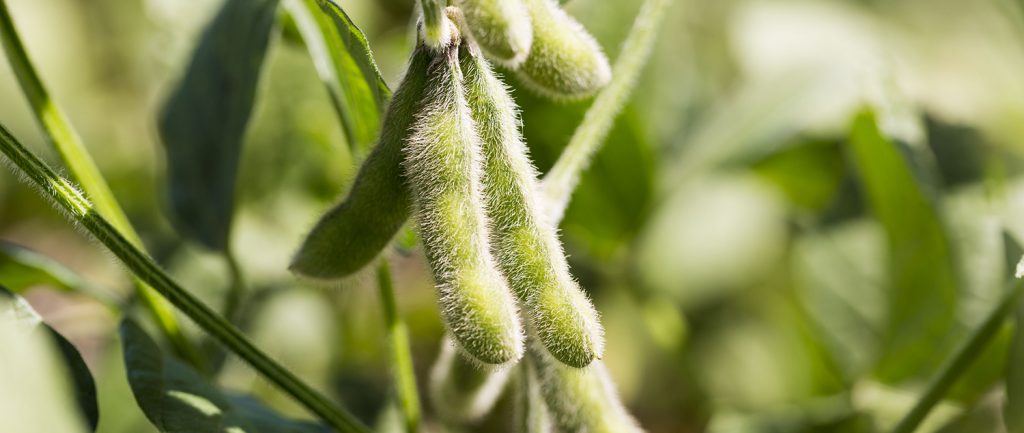October in Minnesota is known for Halloween, harvest – and the potential for bad weather.
One legendary story that has circulated for generations around Minnesota is the Halloween blizzard of 1991. Though the recent snowfall wasn’t anything close to that historic blizzard, it did create additional layers with Halloween costumes and kept farmers from making further progress on the 2023 harvest.
“There are quite a few fields still standing and there are probably three or four inches of snow, that’s going to have to melt before farmers continue with harvest,” said Norman County farmer Corey Hanson, a director with the Minnesota Soybean Growers Association. “Or it’s going to have to get unbearably cold like single digits before they go on to combine.”
According to the USDA, due to the rain, snow and hail around the state only about four of the previous seven days were viable for fieldwork, including chemical and manure applications in addition to harvest and fall tillage.
As of the Oct. 30 USDA report, soybean harvest has reached 94%, up from 88% the previous week. This is six days behind schedule from the previous year, but five days ahead of the five-year average. Corn harvested for grain reached 75%, up from 62% the previous week. This is just one day behind last year but five days ahead of the five-year average.
Hanson reported soybean bushels around 20-50 bushels per acre; unless fertilized, it was 75-80 bushels an acre, and corn was around 140-150 bushels per acre. Hanson said this wasn’t far off from his normal yields despite the drought conditions throughout the growing season.
From May to September, Hanson’s region in northwest Minnesota only received about three inches of rain. He’s hopeful the recent snow will help improve growing conditions next year.
“It is what it is, you can’t change Mother Nature,” Hanson said. “Farmers are still one of the greatest risk bearers there ever is, because we’re totally dependent on Mother Nature for sunshine, for warmth, for coolness and for moisture. You just have to roll with the punches, and it’ll be better next year.”
Hanson said he finished harvest before the winter weather, but there is still about 10-15% of the soybean crop in the ground and around half of the corn crop in the ground as well in his area. He will have to wait until the weather clears up and the snow either melts or freezes enough to combine over.
“You have to remember that you do everything the best you can,” Hanson said. “That’s what I’ve always been taught. To put your best foot forward and you put the best knowledge that you have for it. And if it doesn’t work out, there’s nothing you can do.”
Down south: so far apart, yet so similar
In southeast Minnesota, Minnesota Soybean Research & Promotion Council (MSR&PC) Director Ben Storm also contended with snowy, cold conditions.
The snow was a factor in slowing growers down with harvest and creating more challenges like mud, but it was minimal compared to the three inches northern Minnesota received in the final weekend of October.
By early November, Storm was just about done with harvest. He estimates his area is about 75% done.
“A half a day and we’d be done,” said Storm, who farms in Olmsted County. “It’s just a matter of getting that half day. We went and looked today and there was just enough snow on the corn that there’s got to be better days coming.”
Though the moisture has finally arrived, it wasn’t enough to make an impact on the crop and Storm’s still not happy with the yield results he’s seeing.
On the flip side, about 180 miles west of Storm in southwest Minnesota, MSR&PC Director Ron Obermoller finished harvest before snow arrived.
Obermoller, who farms in Brewster, said it was a relief to finish prior to the bad weather, but the area was still slowed down by the conditions.
“I was disappointed in the beans,” Obermoller said. “I thought we got the rain at the right time and I’m guessing we average right around 60 bushels (per acre) across the farm. We can’t complain too much because corn was just a little bit over 200 bushels (per acre). It’s not the biggest crop ever, but it’s above our averages.”
The USDA predicted the average 2023 soybean yield to be 48 bushels per acre and 183 bushels an acre for corn in Minnesota.
“I’d say harvest is probably half-to-two-thirds done around here,” Obermoller said. “There’s some corn and stuff left but not that terribly much. A lot of people are out doing tillage right now. It’ll be an early harvest, early fall this year, unless the weather stays bad.”
Mother nature has a plan all its own and growers always find a way to adapt.







